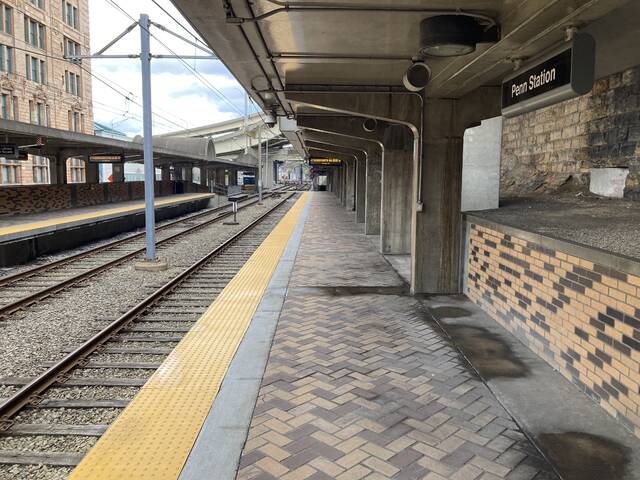Maryn Formley received a frantic call from her niece on March 2, who was stranded in Downtown Pittsburgh due to a protest-induced bus detour that Saturday. Formley, a resident of Brookline, advised her niece to make her way to a rarely used light-rail transit station in the area, which ultimately proved to be a lifesaver.
The niece contacted Formley from outside the Greyhound bus station on the outskirts of Downtown and was instructed to proceed to a nearby LRT station to catch a train (referred to as the “T”) to Station Square, where Formley would meet her. During the call, the niece mentioned spotting a T train arriving near The Pennsylvanian building, which puzzled Formley as there were no existing Downtown T stations in that vicinity. However, she recalled that a T stop had been operational there in the past.
Despite Formley’s initial skepticism about the station’s current usage, the niece boarded the T at the so-called “Penn Station,” an infrequently utilized light-rail stop adjacent to the East Busway and the Amtrak station. Within a short ride through Downtown, crossing the Panhandle Bridge, the niece reached Station Square, where Formley was waiting to pick her up.
This impromptu transfer from the T to the busway left a positive impression, with one commuter expressing a desire for such seamless transitions to become a regular feature rather than just a temporary detour. This unique service provision by Pittsburgh Regional Transit, arising from ongoing light-rail reconstruction efforts, allowed for increased connectivity and convenience for passengers during weekends and periods of low service frequency.
The utilization of Penn Station as a transit hub has a rich history, dating back to its origins as part of the Pennsylvania Canal in the 19th century. Over the years, it has undergone various transformations, including its integration into the modern light-rail network, offering riders a glimpse into the city’s transportation evolution.
While the future of Penn Station’s regular operation remains uncertain post-construction, discussions have surfaced regarding its potential as a vital transfer point, especially with the anticipated growth in passenger traffic from Amtrak services. The station’s strategic location and connectivity to key transit routes present opportunities for enhanced public transportation accessibility in the region.
As Pittsburgh continues to explore options for expanding its light-rail network, including proposals for extending tracks and integrating rail services, the significance of efficient and sustainable transit solutions remains at the forefront of urban planning considerations. The legacy of Penn Station serves as a testament to the city’s ongoing efforts to optimize its public transportation infrastructure for the benefit of residents and visitors alike.
